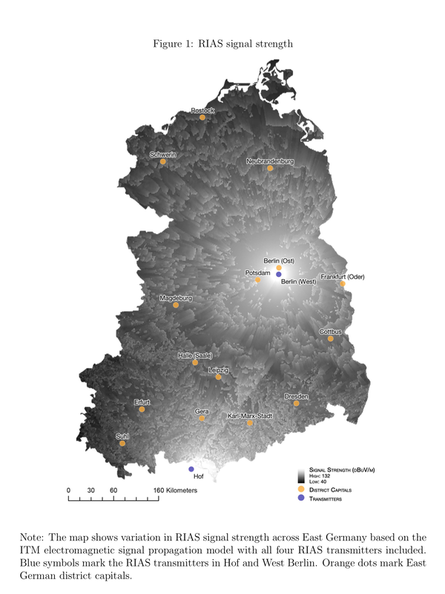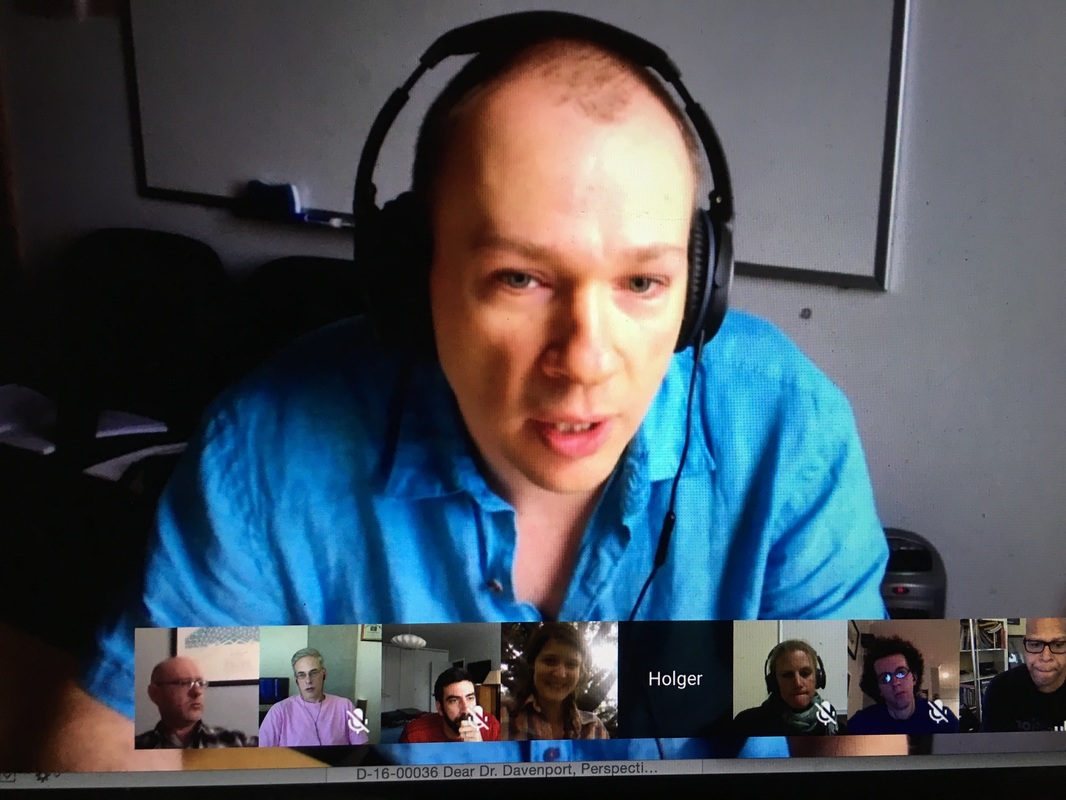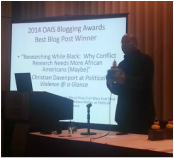The basics of the manuscript are clear:
- existing literature is mixed on the impact of communication technology on social movements
- there is persistent interest in the topic as many believe that communication technology is important for diverse forms of contentious politics
- the authors are able to take advantage of a unique data archive in order to facilitate examination of an understudied topic (i.e., information about radio broadcasts as well as protest behavior in East Germany)
We had an esteemed group (as always): Michael Biggs, Pauline Moore, Heidi Reynolds-Stenson, Cyrus Samii and Zachary Steinert-Threkheld. You can watch the video here.
The 1953 East German uprising is fascinating because it went from quiescence to more or less nationwide to crushed in roughly 36 hours. The East German party, police and military were all caught flat footed: there wasn't a hint of protest in the air prior to the local strike. Twenty four hours after 300 workers went on strike 40,000 Berliners gathered to protest, and by late afternoon an estimated one million plus East Germans were in the streets voicing demands in more than 700 locales spread throughout the country. East German media did not note the events until it announced the Soviet military's declaration of martial law that evening, which suppressed the revolt. Governments on both sides of the Iron Curtain, historians, and other social scientists widely accept that the Radio in the American Sector (RIAS) reports of the events spurred a diffusion of protests over the course of those two days.
Kern shared that they began the project fully expecting to find strong support for a relationship between the RIAS signal coverage across East Germany and the existence of protest. To determine what relationship existed required some innovative data collection and measurement, and the authors were surprised to learn that no such relationship emerges from the data. However, both Euclidian distance from Berlin (where the first strike took place) and, distance as measured by rail lines, are negatively related to the likelihood of a protest. Dr. Holmes, we have a mystery!
Zach got us started noting that he found the null finding, compelling but not the positive account. That raises the question: if not radio was not the mechanism that diffused the protests, what did? Crabtree, Kern and Pfaff suggest that most likely what drove the protest were the network and diffusion dynamics proxied by spatial proximity. Quite naturally, we all speculated about what else spatial proximity could be measuring. We spent some time thinking about what diffusion patterns might have been at work as well as what else could plausibly be brought in/measured to assist in better identifying causal mechanisms.
We also discussed whether null findings that challenge a widely accepted explanation are publishable. By and large the discussants were positively disposed, but as always, the effort is more publishable if it contains a positive account to replace the disconfirmed one. The authors are debating whether to (a) stick with the limited spatial diffusion results, (b) bolster them with more detailed historical vignettes consistent with the evidence, or (c) abandon the construction of a positive account and pursue submission of a null result.
This research is provocative. It raises issues of how detailed work on a single case (if we should even call it this as it is actually multiple cases within a case) always butts up against the issue of generalizability and scope conditions. It brought up issues of social movement organizations, social movement activities, authoritarian resistance, repression (largely missed from the study), causal inference examinations focused on one mechanism but bracketed everything else, what role information plays by itself in the mobilization process as well as how it intersects with human perception and organizational framing. There was a healthy exchange between sociologists who generally focus on social movements/dissent and political scientists who generally don’t. The latter was especially useful as the paper was a little better at explaining how protest differed within a town as opposed to between them.
The discussion ended with general enthusiasm for the project as well as a variety of different directions the authors could take. Relevant to this, the piece and discussion offered some rich ideas for how others in the sub-national, disaggregated research tradition might address their own topics of interest. Indeed, those of us involved in this type of work are often banging our heads against the same types of issues.
@engagedscholar & @WilHMoo



 RSS Feed
RSS Feed
